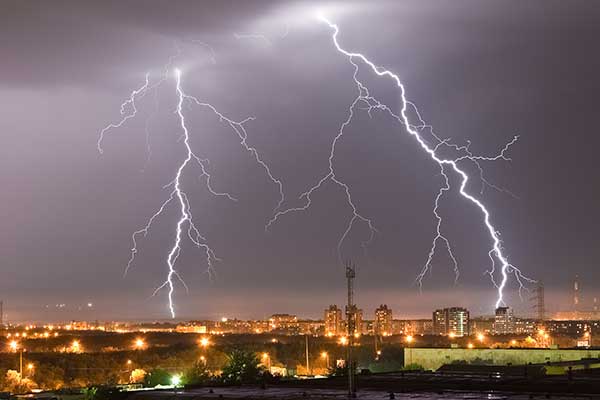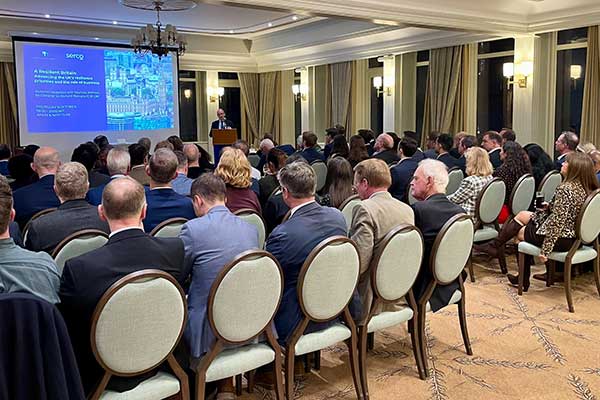By David Denyer, Professor of Leadership and Organisational Change, Cranfield University
In a volatile and complex world, the Heathrow fire offers more than just a case of disruption—it is a system-wide signal failure in resilience thinking.
Despite being Europe’s busiest airport, the fire at a National Grid substation rendered Heathrow temporarily inoperable, cancelling over 1,300 flights and stranding thousands. What unfolded wasn’t an unpredictable “black swan” event—it was a foreseeable scenario rooted in fragile infrastructure, siloed contingency planning, and an absence of integrated operational resilience.
This is precisely the type of systemic exposure the Model for Organisational Resilience, developed by Resilience First and Cranfield University, is designed to help organisations confront. Grounded in five interdependent dimensions—Finance, Infrastructure, Workforce, Social, and Environment—the Model goes beyond business continuity to foster system-wide resilience:
- Anticipate: Identify vulnerabilities and interdependencies before they fail.
- Absorb: Design for disruption, with layered redundancy and response plans.
- Adapt: Strategically evolve capabilities in response to changing conditions.
The Heathrow event illustrates not just a technical failure but a strategic one. We need to shift the narrative from “recovery after impact” to “resilience by design.” The incident highlights key takeaways:
- Design for redundancy, especially in critical national infrastructure.
- Collaborate across organisational boundaries—regulators, suppliers, and partners must stress-test systems together.
- Resilience moves beyond continuity by shifting the organisational mindset from recovery to readiness, from plans to adaptability, and from siloed risk functions to integrated, system-wide capabilities.
- Stress-test against real-world events, not just spreadsheets and tabletop exercises.
Organisational resilience cannot be achieved in isolation—it is a shared, system-wide capability. The disruption at Heathrow was not only costly and chaotic, but entirely avoidable. It underscores the urgent need for integrated, cross-sector resilience planning at every level of critical national infrastructure:
From Unthinkable to Unacceptable
The unfolding details of the Heathrow substation fire demand a deeper examination of how critical national infrastructure (CNI) is managed and where it falls short.
As Rick Cudworth, Executive Director at Resilience First, rightly observed:
“We have to test now against what would have been unthinkable. But they’re not unthinkable anymore—they’re quite thinkable events.”
This is the new reality. Climate volatility, geopolitical instability, and interconnected systems are converging to produce more frequent, more severe, and less predictable disruptions.
Our Model for Organisational Resilience offers a strategic framework for navigating this complexity, moving organisations beyond continuity planning to building resilience across the five interdependent dimensions.
The Heathrow incident exposes a series of systemic gaps:
- Lack of redundancy in energy supply to a globally critical transport hub
- Component-level risk thinking, without a system-wide perspective
- Underinvestment in stress testing and scenario planning at the system level
This wasn’t just an operational failure—it was a failure of anticipation, of systems leadership, and resilience by design.
As Rick emphasised, “We expect things to work 24/7.” But in today’s world, expectation isn’t a strategy.
Rick also commented: “Resilience is much more than just planning and exercising. A Resilience by design approach requires whole system analysis and a whole society understanding of impacts and the social and economic costs. This is more critical now, given the geostrategic, climate, and technological landscape. The likelihood of more severe events has risen. The changed landscape also means the economics for resilience have changed too. The trade-offs must be reassessed.
The work by Resilience First and Cranfield University to create an integrated model for organisational resilience, as David notes, moves us from reactive approaches to embedded, system-wide resilience. It is a model that puts resilience at the heart of strategy and business model, and is designed to help organisations build capacity as well as capability to absorb shocks and adapt to stresses. By implementing it, organisations have a clearer understanding of what is most important, strategically and from an impact perspective, and where vulnerabilities exist. Resilience indicators and regular in-depth stress testing enable measurement and demonstration of resilience to severe events.”
Strategic takeaways:
- Design for interdependence, not isolation
- Build capability to absorb and adapt, not just recover
- Embed resilience into the boardroom, not just the back office
The Heathrow fire must serve as a catalyst, not just a cautionary tale.
If recent events have prompted reflection on the resilience of your operations or infrastructure, we would be happy to share insights from our work and explore how the Model for Organisational Resilience can support your strategy.
Reach out to learn more about how we are helping organisations move from reactive approaches to embedded, system-wide resilience.
Cranfield University: execdev@cranfield.ac.uk
Resilience First: contact@resiliencefirst.co.uk



